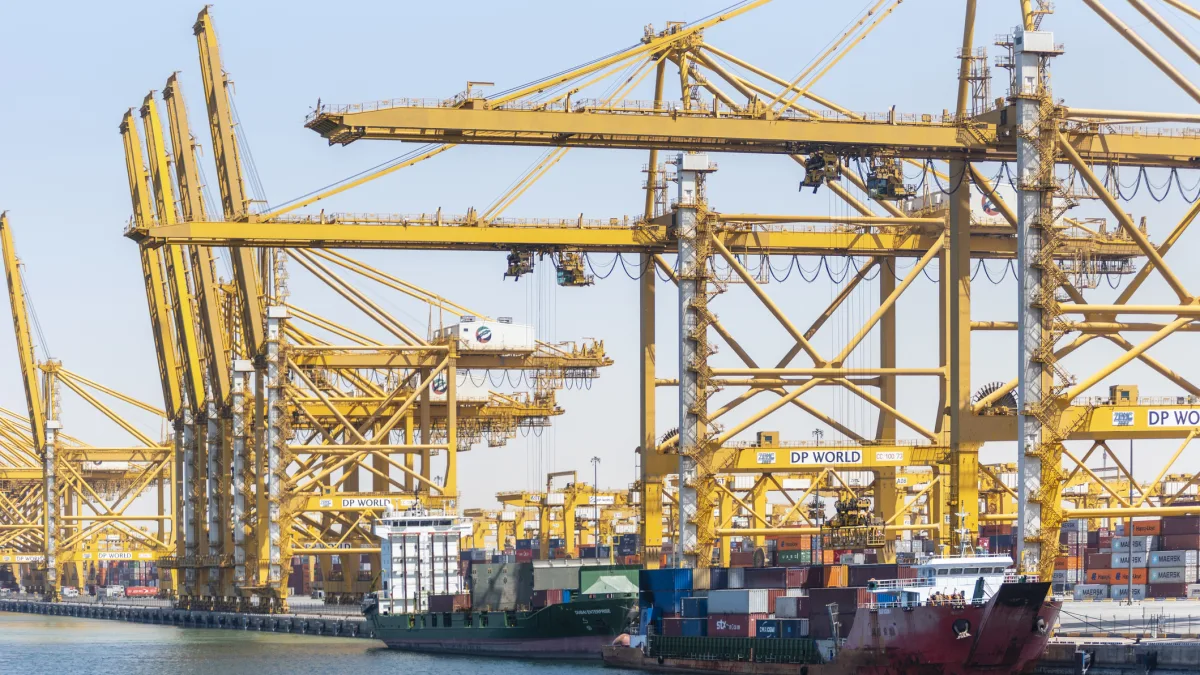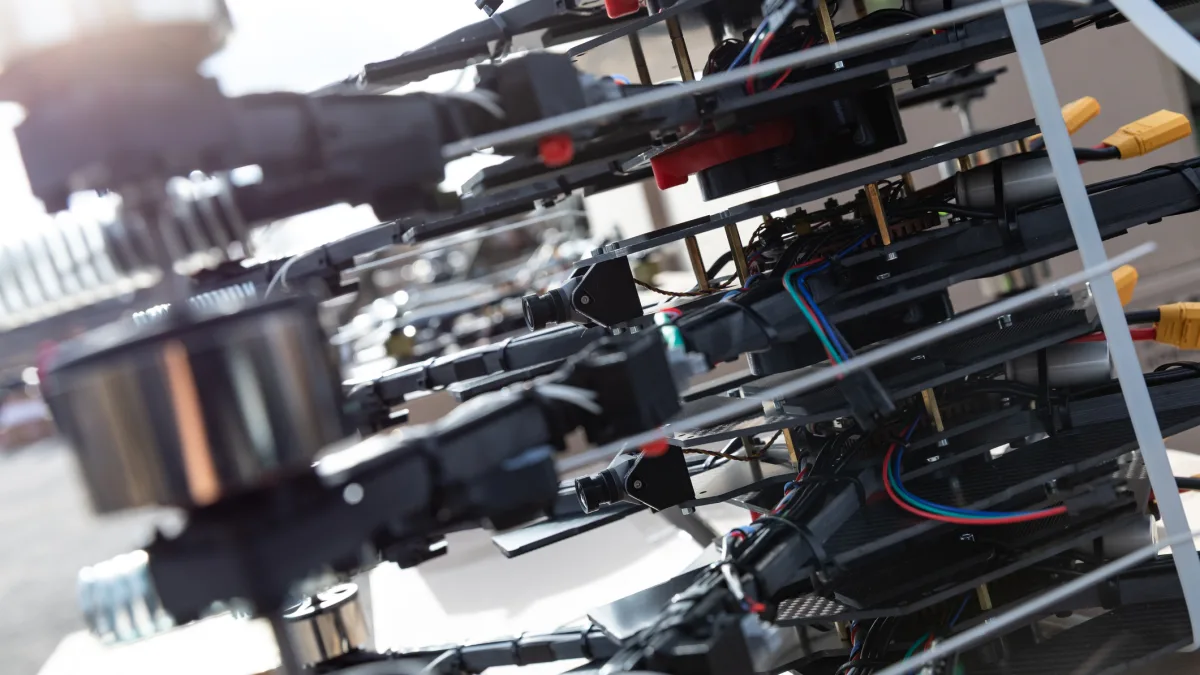Europe’s policymakers have their eyes fixed firmly eastward and westward—war in Ukraine and Donald Trump’s mercurial moods.
However, the continent’s most pressing security challenge may be brewing in plain sight, just across the Mediterranean. From Sudan’s brutal civil war to Romania’s thriving cigarette black market, North Africa’s mounting troubles are creating a cascade of problems that Europe can no longer afford to ignore.
Blood and chaos in the Horn
The current war in Sudan, which erupted in April 2023, has already claimed over 150,000 lives—though the true toll is almost certainly higher.
The conflict pits the Sudanese Armed Forces against the Rapid Support Forces (RSF), a paramilitary group with an unsavoury pedigree. The RSF’s predecessor organisation orchestrated the Darfur genocide in the early 2000s, targeting non-Muslim populations with systematic brutality.
Recent reports detail large-scale massacres against non-Arabs and ongoing mass killings, rape, and famine across the region. Old habits, it seems, die hard.
The carnage extends far beyond Sudan’s borders. Executions and ethnic cleansing have become routine, driving hundreds of thousands into exile. More troubling still, the chaos provides fertile ground for jihadist networks spanning the Horn of Africa and the Sahel. These groups exploit porous borders to coordinate operations, establishing supply lines and safe havens that could soon threaten European interests directly.
The risk of dormant terrorist organisations regaining prominence is considerable. As state authority collapses across swathes of the region, extremist groups find themselves with ample space to regroup and refocus their attention on European targets.
The human tide
Predictably, political collapse translates into migratory pressure. Irregular migration from North Africa follows well-established routes through the Western Balkans, creating security headaches that extend far beyond border management.
These smuggling networks have evolved into sophisticated criminal enterprises, trafficking not just people but a vast array of illicit goods.
The human cost is obvious, but the security implications are more complex. Migration corridors become conduits for organised crime, creating vulnerabilities that experienced criminal networks are quick to exploit.
Smoke and mirrors
Perhaps nowhere is this clearer than in Europe’s thriving black market for tobacco products. The Western Balkans have become a key smuggling route for cigarettes entering Western Europe, creating a criminal ecosystem that extends far beyond tobacco.
The figures are staggering: the European Union loses billions in public revenue annually to cigarette smuggling, with some member states bearing disproportionate costs. Greece faces perhaps the steepest bill, surrendering 624 million euros annually to illicit trade. Bulgaria loses 25 million euros yearly in tax revenue.
Romania presents a particularly instructive case study: one in every ten contraband cigarettes consumed across the EU is smoked there, with the black market claiming 10.1 per cent of total consumption as of March 2025.
The economics are logical. Romanian cigarette taxes account for 74 per cent of the retail price, ranking the country among the three highest in the EU when adjusted for purchasing power parity. Prices rival those in Italy and Spain, creating powerful incentives for cross-border smuggling from lower-tax neighbours.
The situation grows more perverse still. Countries with the highest tax rates—Greece (85 per cent), France (85 per cent), and Ireland (84 per cent)—predictably host the largest illicit markets as a percentage of total consumption. It is a textbook example of unintended consequences.
According to Stop Contrabanda, a website monitoring contraband cigarette seizures, Romania alone surrenders half a billion euros annually to the shadow economy—funds that might otherwise support public services or infrastructure investment. As Bucharest prepares to raise tobacco taxes further, the problem seems destined to worsen.
The health hazard hiding in plain sight
The public health implications compound the economic damage. Counterfeit and contraband tobacco products typically contain higher levels of toxic substances than legitimate alternatives, creating additional health risks for consumers.
This represents a double blow to public finances: lost tax revenue coupled with increased healthcare costs.
The smuggling networks themselves pose broader security risks. Porous borders that facilitate tobacco trafficking can just as easily accommodate weapons, drugs, or human cargo.
Criminal organisations that cut their teeth on cigarettes often diversify into more serious enterprises.
Europe’s tools remain sharp
The continent is hardly defenceless against these challenges. The European Union possesses considerable diplomatic leverage and financial resources that could address many of these problems—if deployed early and strategically.
Humanitarian aid and civil society support represent obvious starting points. By strengthening democratic institutions and supporting local communities, Europe could help build resilience against both extremist influence and state collapse. The emphasis should be on preventing problems rather than managing their consequences.
Border security improvements offer more immediate returns. Enhanced cooperation between member states, better intelligence sharing, and upgraded detection technology could significantly disrupt smuggling networks. The key is coordination: criminal organisations exploit jurisdictional gaps and inconsistent enforcement.
Tax policy reform deserves serious consideration. The current system creates perverse incentives that benefit criminal networks at the expense of legitimate businesses and public finances. Harmonising tobacco taxes across member states—or at least reducing the most egregious disparities—could eliminate much of the profit margin that makes smuggling attractive.
The price of neglect
Left unaddressed, these southern vulnerabilities could evolve into Europe’s most significant security liability. The combination of state failure, criminal networks, and extremist groups creates a perfect storm that threatens both immediate security and long-term stability.
The irony is acute: while European leaders invest enormous political capital in managing relations with distant superpowers, a crisis requiring urgent attention unfolds on their doorstep. History suggests that such blind spots rarely end well.
The solutions exist and remain within reach—for now. But windows of opportunity have a tendency to close unexpectedly, particularly in regions where state authority hangs by increasingly frayed threads. Europe would be wise to act while it still can.
Photo: Dreamstime.







